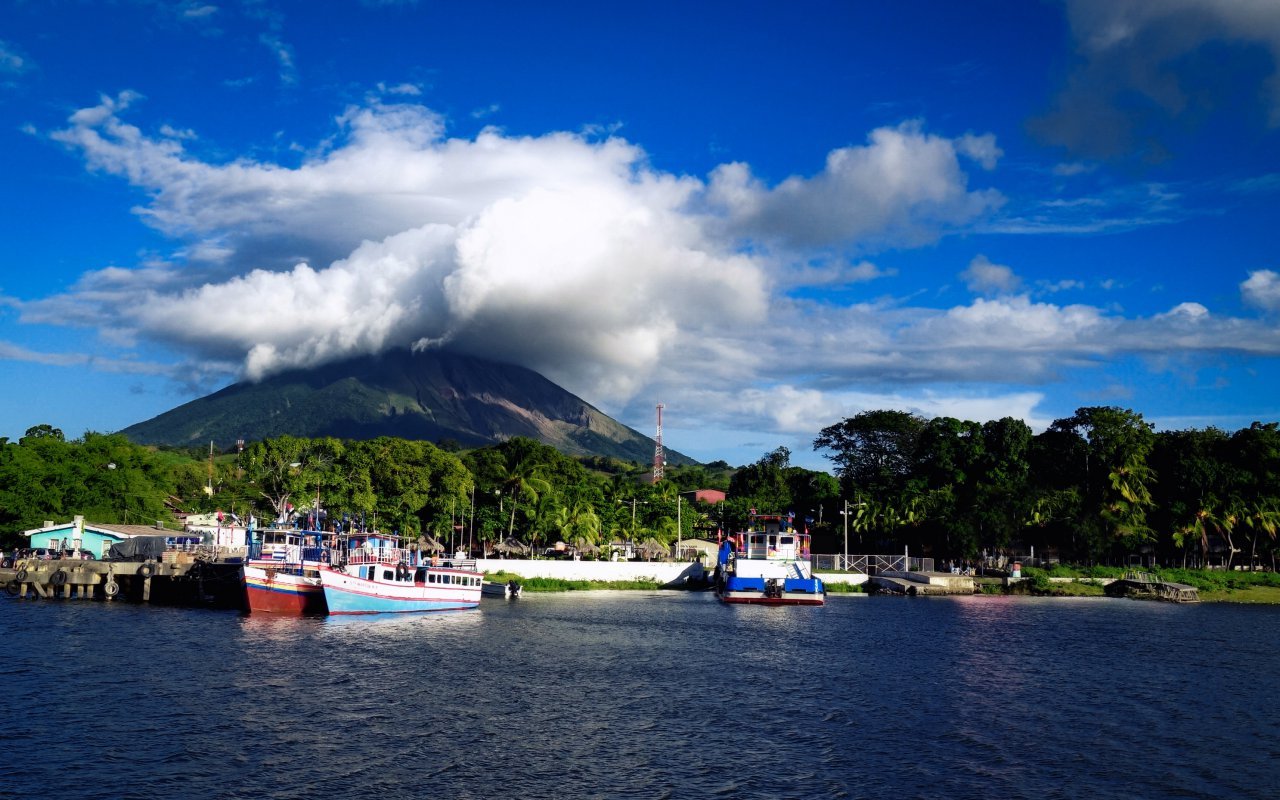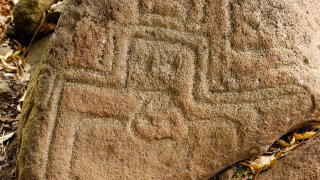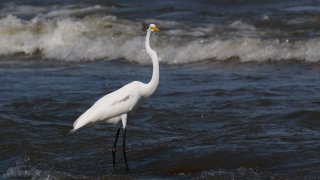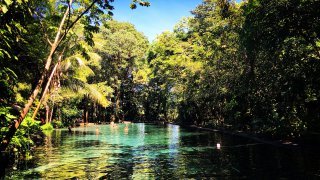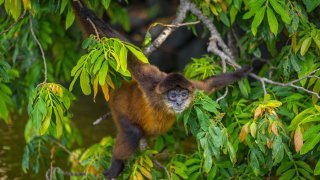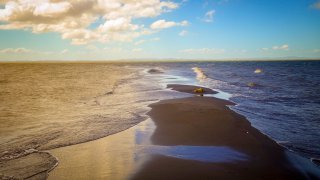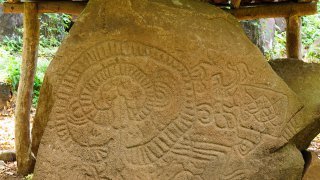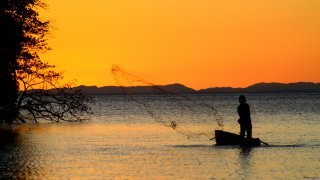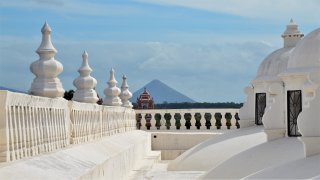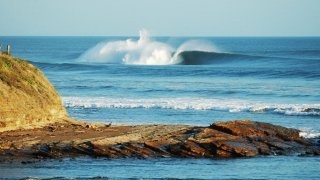Located in the middle of Lake Nicaragua, Cocibolca, Ometepe is the largest island in the lake. Easily accessible by ferry from the port of San Jorge, near Rivas, it offers a multitude of activities in close contact with nature around its two volcanoes: Concepción et Maderas.
This island has something special, it likes or dislikes, there is a very special onda, different from the mainland. Whether it is during the dictatorship or during other national upheavals, the natives of Ometepe are to contracorriente. It is even said that there are very particular syncretic religious beliefs and rites.
Setting foot in and exploring Ometepe guarantees the traveler a total change of scenery and superb discoveries.
Geography and Climate
With a surface area of less than 300 km2, the island of Ometepe currently has more than 35,000 inhabitants. The two “urban” and administrative centers, Moyogalpa and Altagracia, are of course the most populated. In the protected areas of the island, there are no residents or economic activities. No infrastructure! Nature in an almost raw state, without human intervention. The reason is neither political nor ecological, it is simply the volcanic state and the configuration of certain lands that does not even allow its exploitation. Nature has therefore taken back its rights, quite naturally.
As far as the climate is concerned, temperatures are pleasant all year round, from 26°C in January to 29°C in March. Beware of heavy rains in August, September and October. The lake is known to be the scene of violent storms during this period.
History and Cultural Heritage
The island of Ometepe in Nicaragua is full of history and stories. Its name would come from the terms ōme (two) and tepētl (mountain) from the original Nahuatl language referring of course to the two volcanoes present on the island, Concepción et Maderas.
1500 B.C. would be the period when Ometepe would have seen its first inhabitants settle, a population originating from present-day Mexico would have come down the Pacific coast and settled on this island. It is the period when in our present Middle East pyramids and other architectural surprises were built. The population of Ometepe did not build roads or temples but rather was on transhumance from North America and began to take root on the island. The place then seemed to be welcoming, and rightly so.
How to realize this past history? this presence? Large quantities of ceramics and huge sculptures carved in basalt have been found on Ometepe’s land and are now on display in the Altagracia church park and in Managua, in the museum! Twin sculptures attributed to the same builders can also be found on the island of Zapatera, another island in Lake Nicaragua.
You will then discover a little everywhere on the open-air island archaeological sites and petroglyphs dating from -300 BC. However, it is estimated that few of these past treasures have been discovered, there is still a great potential for excavations in the region, in the country itself !
During the colonization of the country by the Spaniards, Ometepe was a refuge for pirates. Indeed, from the island, it was easy to get to Granada for raids. The city of Granada was then regularly looted and women were kidnapped. This freebooter entry by the Caribbean Gate and by the Rio San Juan forced the inhabitants of Ometepe to isolate themselves and to hide inside the island.
More recently, during the 19th century, there was interest in the idea of piercing and thinking differently about Lake Nicaragua in view of the construction of an inter-oceanic canal between the Atlantic and Pacific Oceans. In spite of the already existing natural waterways crossing the lake, the many costly developments discouraged more than one company. French engineers faced the same “tests” with the neighboring Panama Canal. Until recently, 2003 and 2013, the subject of a canal in Nicaragua was still on the table and calls for tenders were launched. Decidedly, history still holds many surprises for this beautiful island of Ometepe which would be at the center of the changes brought about by this realization.
What to do in Ometepe ?
The island of Ometepe is not very big but it is full of different places to visit and sports activities to do in order to enjoy all the splendor of this volcanic land in the middle of Lake Nicaragua. Here are the main ones:
- a Trek on the Concepción Volcano
- a Trek or a hike on the Maderas Volcano
- kayaking on the Istián River: you will observe the abundant vegetation and the many resident and migratory birds (herons, jacanas, storks and even hawks) of this river located between the two volcanoes of the island.
- a swim in Ojo de Agua : you will be able to relax in volcanic waters rich in minerals which would have medicinal virtues, in the shade of the tropical forest.
- a stroll in the Charco Verde nature reserve: at the foot of the Concepción volcano, along the lagoon and Lake Nicaragua listening to the many howler monkeys and all kinds of birds.
- a sunset at Punta Jesús María : a narrow land advance of almost a kilometer long in the middle of Lake Nicaragua overlooking the Mombacho volcano, near Granada.
- a hike to the San Ramón Waterfalls : pleasant walk on the southern slope of the Maderas volcano, in the midst of this abundant nature where you can observe different animals such as Congo monkeys, boas, a wide variety of birds, and insects before arriving at the waterfall to cool off.
- a visit to the Ceibo Museum : founded in 2007, the museum retraces the richness of Nicaraguan archaeology and the pre-Columbian vestiges of the region.
- A stroll to the discovery of some 1500 petroglyphs that dot the island.
- a tour of the island by bike, scooter or motorcycle
- water sports on the lake such as kitesurfing, kayaking or fishing on a boat.
- a swim in the waters of the lake in Playa Santo Domingo
Getting there and around
The island of Ometepe is accessible by boat and ferry from the city of Granada or from the port of San Jorge, near the town of Rivas.
The boat from Granada leaves only twice a week and arrives in the north of the island in the town of Altagracia after a four-hour crossing – is no longer in service at present.
The fastest and most convenient way is to take a ferry or boat from the port of San Jorge to the port of Moyogalpa in Ometepe. The crossing takes a little over an hour with one or two departures per hour.
It is possible to take one’s own car on the island, transported on ferries only, or to rent one on the spot.
On the island you can also travel by cab, bus, scooter or motorcycle.
